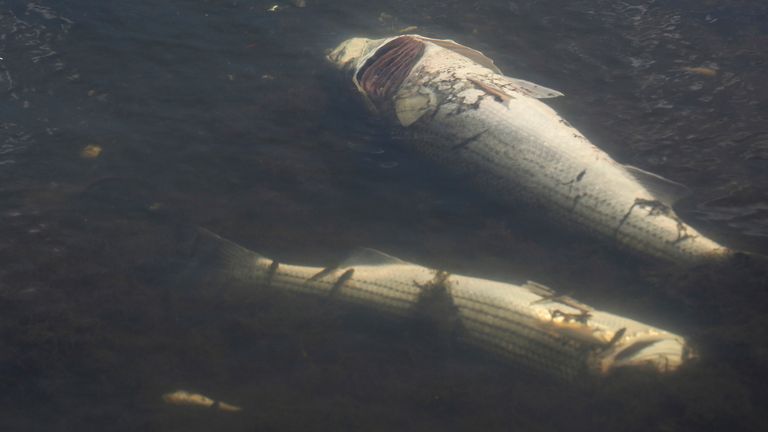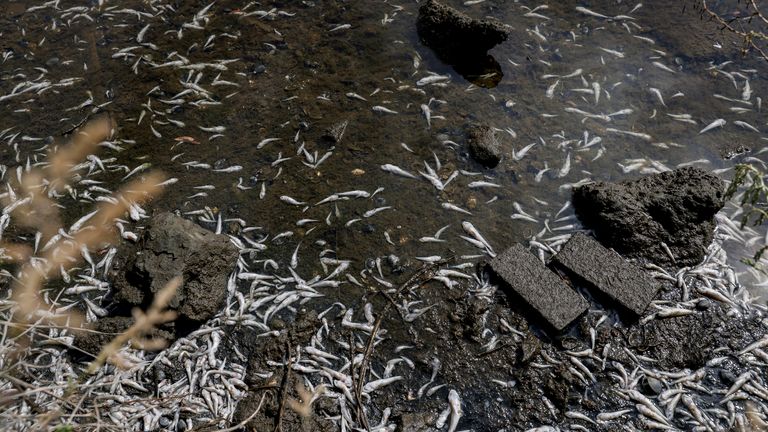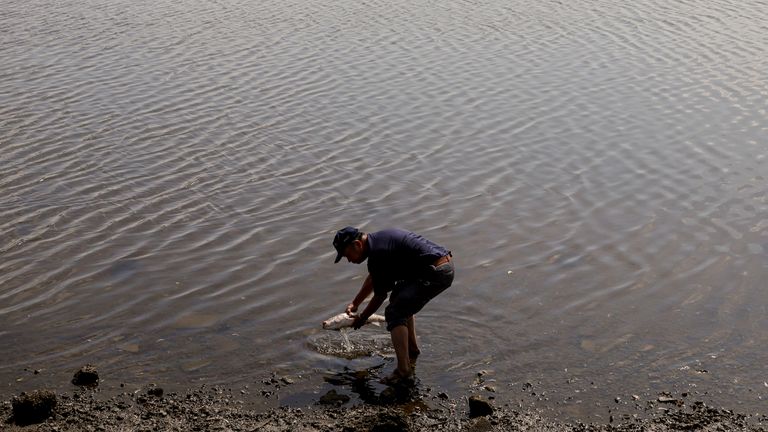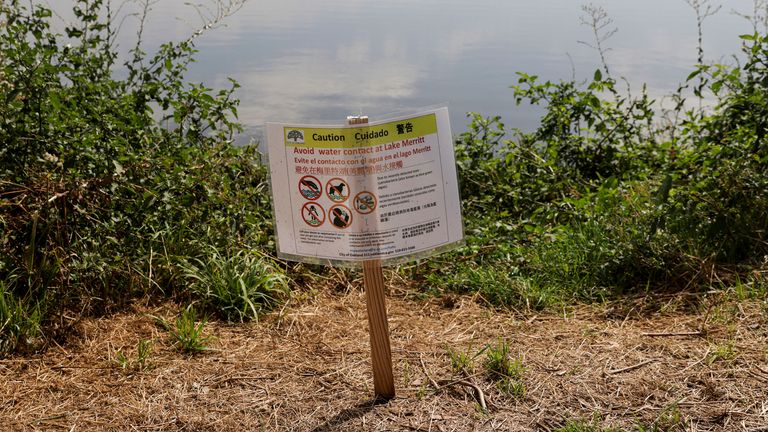Unprecedented red tide kills thousands of fish in San Francisco Bay Area
A stunning multitude of carcasses has washed ashore, leaving a foul odour experts warn could get worse during this weekend's expected heatwave.
Wednesday 31 August 2022 22:42, UK
An unprecedented red tide in the San Francisco Bay Area is killing thousands of fish and other marine life.
A stunning multitude of carcasses has washed ashore, leaving a foul odour experts warn could get worse during this weekend's expected heatwave.
The dead fish began piling up on shores and beaches last week.
Locals have also reported rust-coloured waters.
On Wednesday, crews began working to remove dead crabs, bat rays, striped bass and other fish that began piling up on the shores of Oakland's Lake Merritt over the weekend.
The mass fish deaths are thought to be caused by a harmful algal bloom that has been spreading across the bay since last July.
A red tide, or harmful algal bloom, is caused when colonies of algae grow out of control and produce toxic or harmful effects.
Microscopic algae can produce toxins that kill fish and make shellfish dangerous to eat, and could also make the surrounding air difficult to breathe.
Other non-toxic species can also cause harmful consequences, such as when masses of algae die and decompose, depleting oxygen in the water and causing animals to either leave the area or die.
It can be hard to definitively say what causes algal blooms because their occurrence in some locations appears to be natural, while in others they are the result of human activities such as excess nutrients from agriculture, industrial pollution or excessive fertiliser use.








